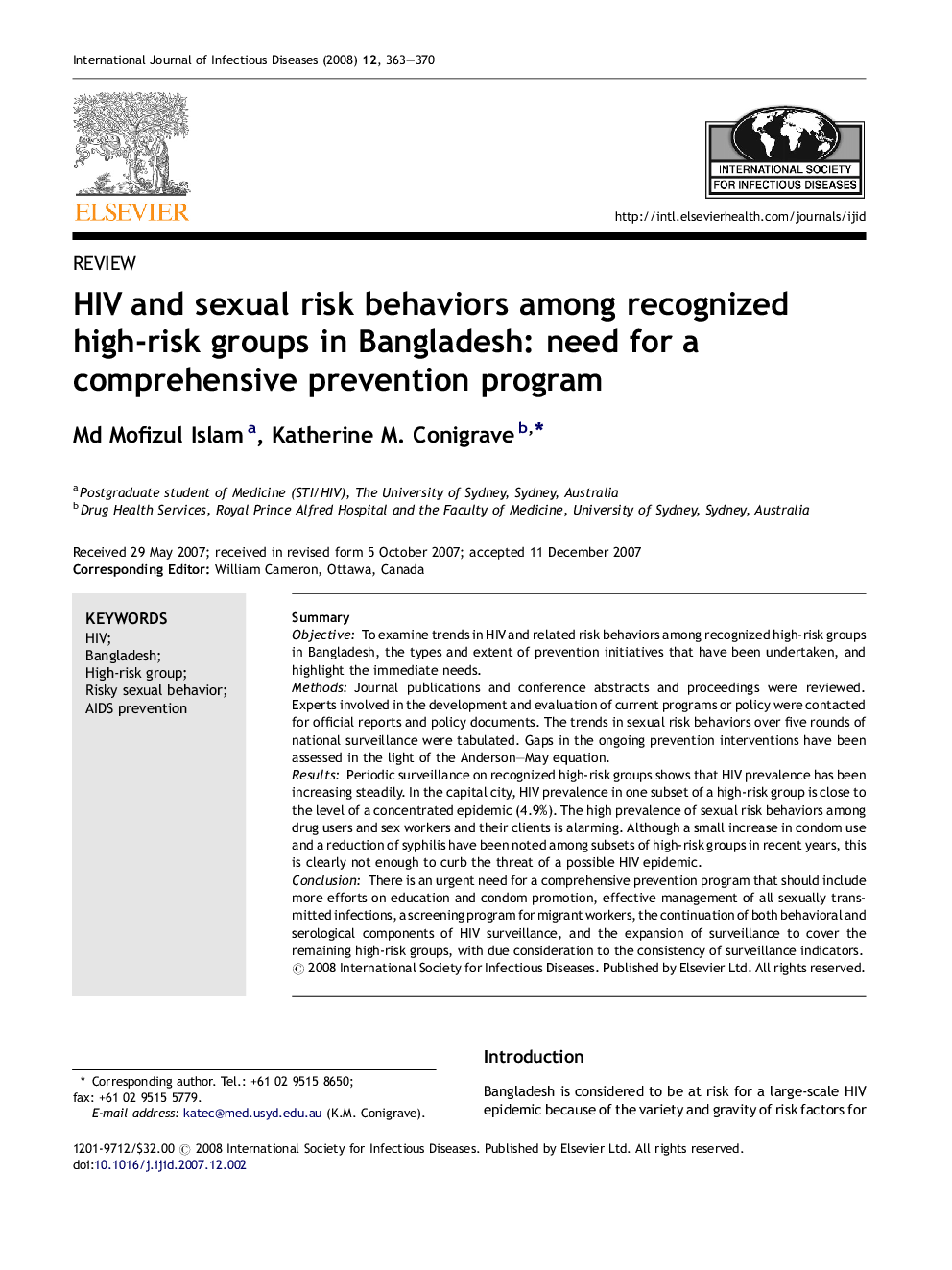| Article ID | Journal | Published Year | Pages | File Type |
|---|---|---|---|---|
| 3364784 | International Journal of Infectious Diseases | 2008 | 8 Pages |
SummaryObjectiveTo examine trends in HIV and related risk behaviors among recognized high-risk groups in Bangladesh, the types and extent of prevention initiatives that have been undertaken, and highlight the immediate needs.MethodsJournal publications and conference abstracts and proceedings were reviewed. Experts involved in the development and evaluation of current programs or policy were contacted for official reports and policy documents. The trends in sexual risk behaviors over five rounds of national surveillance were tabulated. Gaps in the ongoing prevention interventions have been assessed in the light of the Anderson–May equation.ResultsPeriodic surveillance on recognized high-risk groups shows that HIV prevalence has been increasing steadily. In the capital city, HIV prevalence in one subset of a high-risk group is close to the level of a concentrated epidemic (4.9%). The high prevalence of sexual risk behaviors among drug users and sex workers and their clients is alarming. Although a small increase in condom use and a reduction of syphilis have been noted among subsets of high-risk groups in recent years, this is clearly not enough to curb the threat of a possible HIV epidemic.ConclusionThere is an urgent need for a comprehensive prevention program that should include more efforts on education and condom promotion, effective management of all sexually transmitted infections, a screening program for migrant workers, the continuation of both behavioral and serological components of HIV surveillance, and the expansion of surveillance to cover the remaining high-risk groups, with due consideration to the consistency of surveillance indicators.
